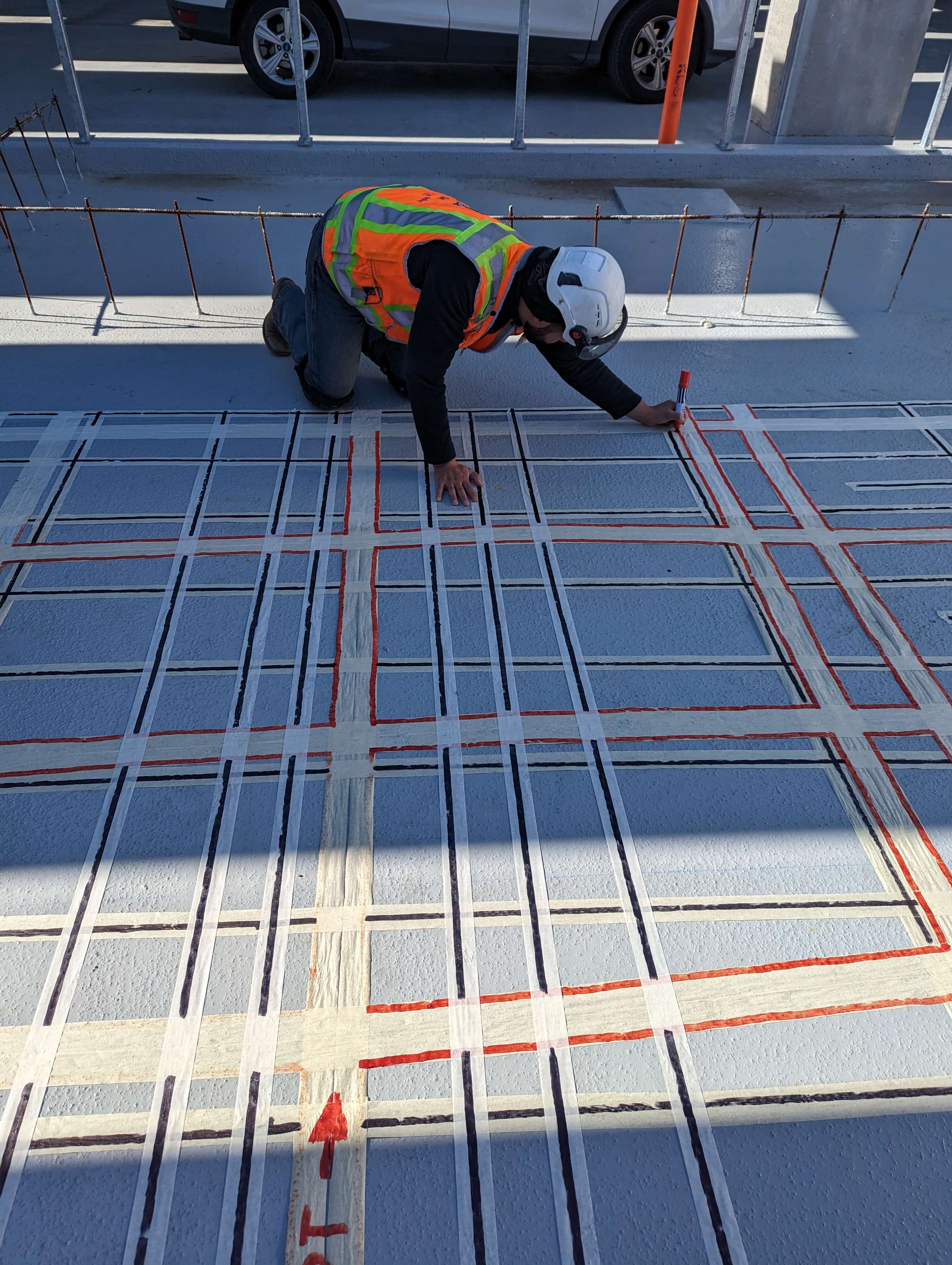Comprehensive Overview to Concrete Scanning Technologies
Comprehensive Overview to Concrete Scanning Technologies
Blog Article
Beyond the Surface Area: Leveraging Advanced Concrete Scanning Techniques for Unmatched Precision and Insight
In the world of construction and infrastructure upkeep, the quest for precision and thoroughness is unending. Advanced concrete scanning techniques have actually become essential devices in this pursuit, offering a glimpse beneath the surface to reveal a globe of essential understandings. By using advanced modern technologies, specialists can uncover abnormalities, assess the condition of concrete structures, and make educated decisions that form the program of projects. The implications of these methods prolong much past mere surface-level analyses, assuring a deepness of accuracy and understanding that is unmatched.
Value of Advanced Concrete Scanning
The value of utilizing advanced concrete scanning methods depends on the unmatched accuracy they provide for detecting sub-surface anomalies and ensuring structural stability. By employing innovative innovations such as ground-penetrating radar (GPR), electromagnetic induction, and advanced sonar imaging, building professionals can dig below the surface area of concrete frameworks with a degree of precision that far exceeds traditional inspection methods. Concrete Scanning. These methods make it possible for the identification of hidden threats like rebar rust, voids, channels, or post-tension cable televisions that can compromise the stability and safety of a framework with time
Furthermore, advanced concrete scanning provides indispensable understandings into the total problem of a concrete aspect without the demand for intrusive procedures, decreasing the risk of triggering damages during the evaluation process. The capability to determine the specific location and depth of possible concerns enables targeted repair work and upkeep, eventually lengthening the life-span of the structure and optimizing its efficiency. Fundamentally, the relevance of advanced concrete scanning can not be overemphasized in the realm of construction and facilities upkeep, where precision and reliability are paramount.
Kinds Of Cutting-Edge Technologies

Abnormalities and Issue Discovery

In addition to GPR, concrete scanning strategies like thermography and impact-echo testing are additionally reliable in detecting issues and anomalies. Thermography utilizes infrared innovation to determine variations in surface temperature, indicating prospective areas of issue such as delamination or wetness ingress. On the various other hand, impact-echo testing includes assessing acoustic responses to identify voids, fractures, and other flaws within the concrete. By leveraging these sophisticated techniques, specialists can proactively deal with structural issues, guaranteeing the durability and security of concrete structures.
Assessing Concrete Problem
Exactly how can engineers accurately assess the condition of concrete frameworks to guarantee their longevity and safety and security? Examining the concrete problem is an essential aspect of keeping framework integrity. Numerous advanced concrete scanning methods are employed for this purpose. Ground-penetrating radar (GPR) is commonly utilized to evaluate the internal framework of concrete, finding voids, fractures, and various other anomalies that may jeopardize its toughness. Furthermore, impact-echo testing can supply insights right into the thickness and honesty of concrete aspects. Ultrasonic pulse rate testing is one more useful technique for examining concrete top quality by measuring the rate of acoustic waves with the material.
Combining non-destructive screening approaches with aesthetic assessments permits for a thorough evaluation of concrete condition, making read this article it possible for designers to recognize potential problems early on and execute timely maintenance or repair work. By leveraging these sophisticated methods, designers can make certain the lasting longevity and security of concrete frameworks.
Enhancing Decision-Making Processes
In the realm of infrastructure management, enhancing decision-making procedures is vital for guaranteeing the reliable maintenance and durability of concrete structures. Boosted decision-making processes in concrete management include using advanced scanning methods to click this site collect comprehensive information on the condition of structures. By leveraging modern technologies such as ground-penetrating radar and 3D imaging, stakeholders can make educated decisions concerning repair work, reinforcement, or replacement strategies.
These progressed scanning methods supply important understandings into the internal structure of concrete, recognizing possible issues such as gaps, splits, or rust that might not be visible on the surface area. This level of in-depth info permits proactive maintenance planning, minimizing the risk of architectural failures and boosting the overall life expectancy of concrete frameworks.
Additionally, by incorporating digital paperwork and analysis devices into the decision-making process, stakeholders can track the advancement of concrete problems over time, allowing predictive maintenance techniques and optimizing source allotment. Inevitably, the integration of sophisticated concrete scanning techniques improves decision-making procedures by providing unmatched accuracy, understanding, and efficiency in infrastructure monitoring.
Conclusion
In final thought, progressed concrete scanning methods offer exceptional accuracy and understanding in spotting anomalies, problems, and examining the condition of concrete structures. By leveraging innovative modern technologies, decision-making procedures can be improved, causing even more efficient and enlightened solutions for preserving and repairing concrete facilities. These strategies play a crucial duty in making certain the safety and longevity of concrete frameworks, making them a vital device in the area of construction and engineering.
Furthermore, progressed concrete scanning provides important understandings right into the total problem of a concrete element without the need for intrusive actions, decreasing the risk of triggering damage during the visit the website assessment process - Concrete Scanning. An additional cutting-edge innovation is 3D X-ray scanning, which provides in-depth photos of the inner structure of concrete, offering valuable info without the need for damaging screening. In Addition, Concrete Cover Meters are used to gauge the thickness of concrete cover over support bars accurately. Improved decision-making processes in concrete management involve making use of advanced scanning strategies to gather thorough information on the problem of structures.In verdict, advanced concrete scanning methods supply unmatched precision and insight in discovering anomalies, issues, and assessing the problem of concrete structures
Report this page